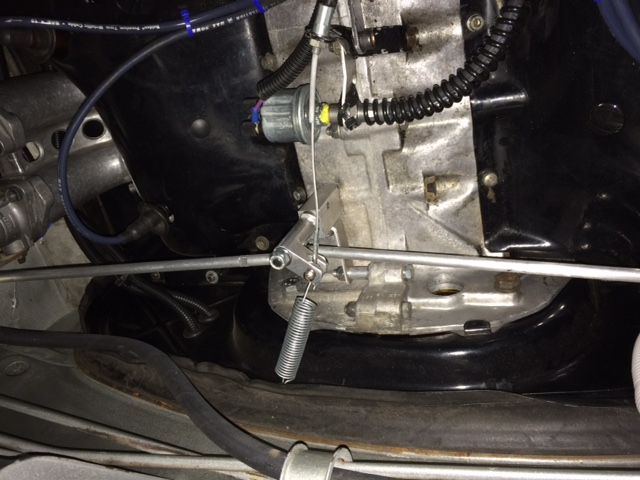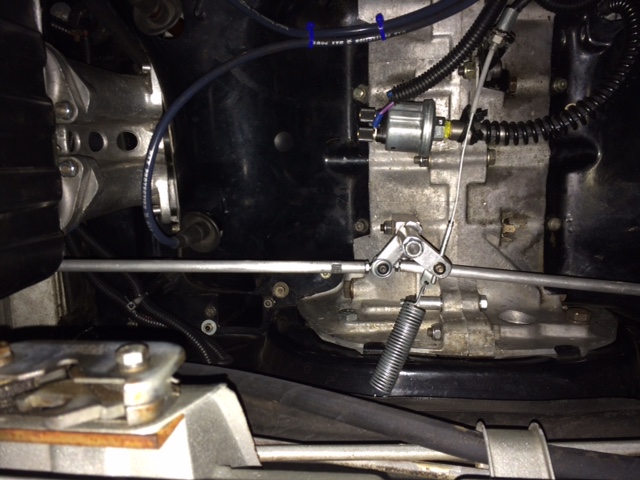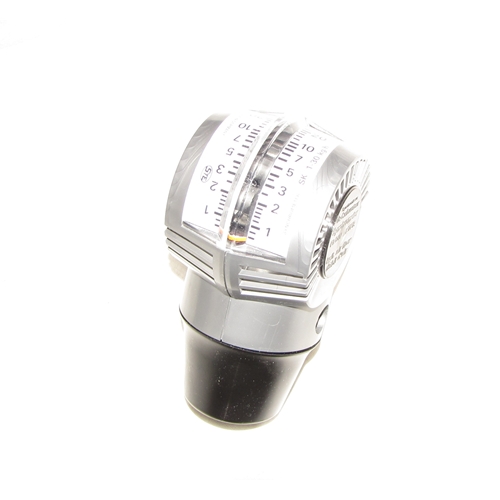Printable Version of Topic
Click here to view this topic in its original format
914World.com _ 914World Garage _ Carburetored type IV engine problem diagnosis.
Posted by: Keith914 Oct 21 2016, 07:00 PM
Just completed very careful cleaning, installing, adjusting, balancing two Weber carbs on my recently rebuilt '72 1.7 type IV 914 engine upgraded to 2.4 L. Carbs are real Webers (Spain), and we're working well earlier. Balancing and setting idle at 1,100 rpm was done on cold engine - nice smooth idle and solid response to accelerator action. The carbs are 44's, idle jets are 55's, main jets are145's and the air jets are 200's. Sea level ambient condition.
Engine starts immediately and runs very well and continues to run very well above about 2,000 rpm. But once engine is approaching and then at normal operating temp - 190 F, it will not run smoothly below about 2,000 rpm, and at idle accelerator position, engine drops below 1,000 rpm and stumbles to stalling sometimes with pre ignition sounds as it stalls! Timing is set at 32 degrees at 3,000 rpm, and distributor is new with new Pertronix electronic unit, and no vacuum mechanism.
Welcome any diagnosis suggestions.
Posted by: injunmort Oct 21 2016, 07:44 PM
all linkages and actuators are sync, try 34 degrees advance at 3000rpm, that is where my 40's run best.
Posted by: Keith914 Oct 21 2016, 08:50 PM
Just completed very careful cleaning, installing, adjusting, balancing two Weber carbs on my recently rebuilt '72 1.7 type IV 914 engine upgraded to 2.4 L. Carbs are real Webers (Spain), and we're working well earlier. Balancing and setting idle at 1,100 rpm was done on cold engine - nice smooth idle and solid response to accelerator action. The carbs are 44's, idle jets are 55's, main jets are145's and the air jets are 200's. Sea level ambient condition.
Engine starts immediately and runs very well and continues to run very well above about 2,000 rpm. But once engine is approaching and then at normal operating temp - 190 F, it will not run smoothly below about 2,000 rpm, and at idle accelerator position, engine drops below 1,000 rpm and stumbles to stalling sometimes with pre ignition sounds as it stalls! Timing is set at 32 degrees at 3,000 rpm, and distributor is new with new Pertronix electronic unit, and no vacuum mechanism.
Welcome any diagnosis suggestions.
Also I should mention on two occasions as the engine stalled from idle, there was a loud single backfire?
Posted by: Keith914 Oct 21 2016, 08:52 PM
Here is a pic of the linkage.
Posted by: Valy Oct 21 2016, 09:00 PM
You should adjust carbs when engine is warm, not cold.
Sounds like the mixture is too rich at idle.
Posted by: Keith914 Oct 21 2016, 09:00 PM
Here is a pic of the linkage.

Here is a better pic.

Posted by: Keith914 Oct 21 2016, 09:11 PM
You should adjust carbs when engine is warm, not cold.
Sounds like the mixture is too rich at idle.
The air/fuel mixture "needle" valves are set at two turns from closed. I wil turn them in when the engine is hot as a trial tomorrow. Thanks for your comment.
Posted by: stugray Oct 21 2016, 11:06 PM
Sounds like an ignition problem not carbs.
Is your advance mechanism sticking?
Posted by: flyer86d Oct 22 2016, 05:03 AM
Clogged idle jet.
Posted by: Keith914 Oct 22 2016, 08:51 PM
Removed the carbs again and inspected the float adjustment. Both were above parallel with the underside of the casting - adjusted them back to parallel. This reduced the fuel level about 1/2 inch. Inspected all four idle jets - all were clear. Inspected the jet and diaphragm of the acceleration pumps - both were clean and in good shape.
Adjusted the air fuel valves leaner and richer ( in and out respectively) with the engine close to operating temp. Was unable to find a smooth idle position - each setting eventually leading to a stall at various idle speeds. Engine still runs well above 2,000 rpm - suggests ignition is firing all 4.
Checked timing - at 3,000 rpm, setting is on leading edge of large fan bar - 34 degrees (?). Fuel pressure is at 4 lbs/ square inch.
What should I try next?
Posted by: stugray Oct 22 2016, 09:06 PM
Removed the carbs again and inspected the float adjustment. Both were above parallel with the underside of the casting - adjusted them back to parallel. This reduced the fuel level about 1/2 inch. Inspected all four idle jets - all were clear. Inspected the jet and diaphragm of the acceleration pumps - both were clean and in good shape.
Adjusted the air fuel valves leaner and richer ( in and out respectively) with the engine close to operating temp. Was unable to find a smooth idle position - each setting eventually leading to a stall at various idle speeds. Engine still runs well above 2,000 rpm - suggests ignition is firing all 4.
Checked timing - at 3,000 rpm, setting is on leading edge of large fan bar - 34 degrees (?). Fuel pressure is at 4 lbs/ square inch.
What should I try next?
Based on some of your explanation I think you should read the instructions again of how you set the float valves.
Running poorly once warm could be an intake manifold air leak.
Had one this morning at the track because I had just reinstalled both carbs with phenolic spacers and double gaskets. Ran great on all of the 5 minute loops around the neighborhood.
The car had never been solidly heat soaked so when I checked the carbs after the first race they were both loose
Posted by: Keith914 Oct 23 2016, 08:24 PM
Removed the carbs again and inspected the float adjustment. Both were above parallel with the underside of the casting - adjusted them back to parallel. This reduced the fuel level about 1/2 inch. Inspected all four idle jets - all were clear. Inspected the jet and diaphragm of the acceleration pumps - both were clean and in good shape.
Adjusted the air fuel valves leaner and richer ( in and out respectively) with the engine close to operating temp. Was unable to find a smooth idle position - each setting eventually leading to a stall at various idle speeds. Engine still runs well above 2,000 rpm - suggests ignition is firing all 4.
Checked timing - at 3,000 rpm, setting is on leading edge of large fan bar - 34 degrees (?). Fuel pressure is at 4 lbs/ square inch.
What should I try next?
Based on some of your explanation I think you should read the instructions again of how you set the float valves.
Running poorly once warm could be an intake manifold air leak.
Had one this morning at the track because I had just reinstalled both carbs with phenolic spacers and double gaskets. Ran great on all of the 5 minute loops around the neighborhood.
The car had never been solidly heat soaked so when I checked the carbs after the first race they were both loose
Thanks for all the feedback. Have checked for vacuum leaks and when engine is running will use some carb cleaner to double check vacuum leaks.
Will install a fuel pressure regulator before start up to bring the pressure down from 4 to 2.5 lbs/square inch.
Posted by: McMark Oct 24 2016, 07:21 AM
What's your advance at idle?
Get a modern adjustable timing light. They're cheap and you'll use it regularly.
Posted by: porschetub Oct 24 2016, 02:22 PM
That fuel pressure is very high,that would cause the stalling,try to regulate it back to 3 psi,I think Jake Raby mentions he uses 2.5 psi. which ever pressure you use it will improve.
Choose a quality low pressure regulator not the cheap crappy one the VW shops sell.
You can never tune carbs with high fuel pressure as you will have fuel spilling over from the fuel bowls down the throats,raw fuel doesn't burn well.
These are large carbs for a 1.7 what size venturies are you running? .
Good luck.
Posted by: Racer Chris Oct 24 2016, 03:11 PM
These are large carbs for a 1.7 what size venturies are you running? .
He said its a 2.4L now.
Posted by: Mr Pharmacist Oct 25 2016, 01:54 AM
I had idling issues for ages on my 2056 with 40 IDF's. I eventually fixed it by balancing the carbs using a carb air flow meter and a youtube video - its never idled so smoothly!
Posted by: Keith914 Oct 25 2016, 09:12 AM
One more issue identified. The gaskets between the heads and the intake are thick (1/4") which are prone to causing vacuum leaks with carbs. I will be replacing them with typical thin gaskets today and will report back.
Posted by: rhodyguy Oct 25 2016, 09:37 AM
Don't tighten one carb to intake nut fully. Bring the torque value up in stages in a x pattern.
Posted by: Eric_Shea Oct 25 2016, 11:32 AM
You have to use a syncrometer.
Valves and timing must be set.
Tune with the engine warm and at 2000 RPM
Without a syncrometer, you're just pissing in dark pants. ![]()
http://www.partsklassik.com/p-703-synchrometer.aspx
Posted by: Elliot Cannon Oct 25 2016, 02:16 PM
My type IV is 2.2. I also have 44idf Webers. I've had them on the car for about 13 years and just recently rebuilt them. After rebuild it still ran like crap. I again checked the idle jets and found the jets on the passenger side carb were hopelessly clogged. Even after a thorough cleaning and rebuild. Cleaned them out, car runs great. I use 130 mains, 175 air jet, 55idle jets and 34 venturis. What size venturis are you running? Maybe try a different size vent. My experience with Webers is, you need to start with a jet combination then trial and error from there. I tried different combo's till I found what works for me. Try using smaller mains and air jets. You may also find your venturis are too large. (or too small) The syncrometer is a must have for balancing the carbs. I followed this advice for float adjustment. https://www.youtube.com/watch?v=54uPwTZ3DJw
Posted by: cgnj Oct 25 2016, 04:03 PM
Removed the carbs again and inspected the float adjustment. Both were above parallel with the underside of the casting - adjusted them back to parallel. This reduced the fuel level about 1/2 inch. Inspected all four idle jets - all were clear. Inspected the jet and diaphragm of the acceleration pumps - both were clean and in good shape.
Adjusted the air fuel valves leaner and richer ( in and out respectively) with the engine close to operating temp. Was unable to find a smooth idle position - each setting eventually leading to a stall at various idle speeds. Engine still runs well above 2,000 rpm - suggests ignition is firing all 4.
Checked timing - at 3,000 rpm, setting is on leading edge of large fan bar - 34 degrees (?). Fuel pressure is at 4 lbs/ square inch.
What should I try next?
Hi,
Although too much advance isn't likely to cause this problem, IMHO, you have too much. I personally run @28 degrees. Add heat decrease performance just what you are looking for. Just on the description of the problem, you have an unmetered air leak when the motor expands, or a linkage adjustment is for the same reason.
Things that make this happen. Phenolic gaskets and the intake area of head or manifold not being true. I ran paper gaskets till I decided to check this out and found that my heads weren't true. Same with manifolds.
I don't know what distributor you are using, whether it has been recurved, but that info will help. ( I don't think this is you're problem unless you have a 009 or a 050). The curves on these two distributors are really short.
My 2 cents, feel free to blow me off.
Posted by: Vacca Rabite Oct 26 2016, 06:07 AM
I also had idle issues for a while. It turned out the issue was a defective set of gaskets from Weber Carbs Direct that did not have all the gas ports punched in them.
Zach
Posted by: Keith914 Oct 26 2016, 08:50 AM
More good advice thanks. I have used/adopted all the advice. New gaskets for mounting the carbs and manifold to heads arrive today. Will order other main and air jet combinations for possible further tests.
Posted by: Keith914 Oct 30 2016, 03:06 PM
More good advice thanks. I have used/adopted all the advice. New gaskets for mounting the carbs and manifold to heads arrive today. Will order other main and air jet combinations for possible further tests.
Other than a few minor carb adjustments, the problem was gasket vacuum leaks, primarily between the cylinder heads and the intake runners, where the thick (1/4") gaskets from FI were still being used. This is "known by those who know!" Apparently as the engine heated up this vacuum leak occurred and got bigger the hotter the engine got. Thus while tuning in a good idle with a cold /warm engine, the idle setting disappeared as the engine approached normal operating temp. with large vacuum leaks.
Finally discovered one of the "needle screw adjustments" in an air jet had been screwed in too tight breaking a chip out of the casting where the needle extends into the carb barrel - which effectively eliminated it's effectiveness - too much air entering - equivalent to another vacuum leak. Will be replacing the lower casting of this Weber tomorrow.
Posted by: Keith914 Oct 31 2016, 08:41 PM
More good advice thanks. I have used/adopted all the advice. New gaskets for mounting the carbs and manifold to heads arrive today. Will order other main and air jet combinations for possible further tests.
Other than a few minor carb adjustments, the problem was gasket vacuum leaks, primarily between the cylinder heads and the intake runners, where the thick (1/4") gaskets from FI were still being used. This is "known by those who know!" Apparently as the engine heated up this vacuum leak occurred and got bigger the hotter the engine got. Thus while tuning in a good idle with a cold /warm engine, the idle setting disappeared as the engine approached normal operating temp. with large vacuum leaks.
Finally discovered one of the "needle screw adjustments" in an air jet had been screwed in too tight breaking a chip out of the casting where the needle extends into the carb barrel - which effectively eliminated it's effectiveness - too much air entering - equivalent to another vacuum leak. Will be replacing the lower casting of this Weber tomorrow.
With damaged carb part replaced and minor final tuning, including volume metered balance, car is purring like a kitten cold and hot.
Posted by: Localboy808 Nov 1 2016, 06:56 PM
More good advice thanks. I have used/adopted all the advice. New gaskets for mounting the carbs and manifold to heads arrive today. Will order other main and air jet combinations for possible further tests.
Other than a few minor carb adjustments, the problem was gasket vacuum leaks, primarily between the cylinder heads and the intake runners, where the thick (1/4") gaskets from FI were still being used. This is "known by those who know!" Apparently as the engine heated up this vacuum leak occurred and got bigger the hotter the engine got. Thus while tuning in a good idle with a cold /warm engine, the idle setting disappeared as the engine approached normal operating temp. with large vacuum leaks.
Finally discovered one of the "needle screw adjustments" in an air jet had been screwed in too tight breaking a chip out of the casting where the needle extends into the carb barrel - which effectively eliminated it's effectiveness - too much air entering - equivalent to another vacuum leak. Will be replacing the lower casting of this Weber tomorrow.
With damaged carb part replaced and minor final tuning, including volume metered balance, car is purring like a kitten cold and hot.
Powered by Invision Power Board (http://www.invisionboard.com)
© Invision Power Services (http://www.invisionpower.com)
